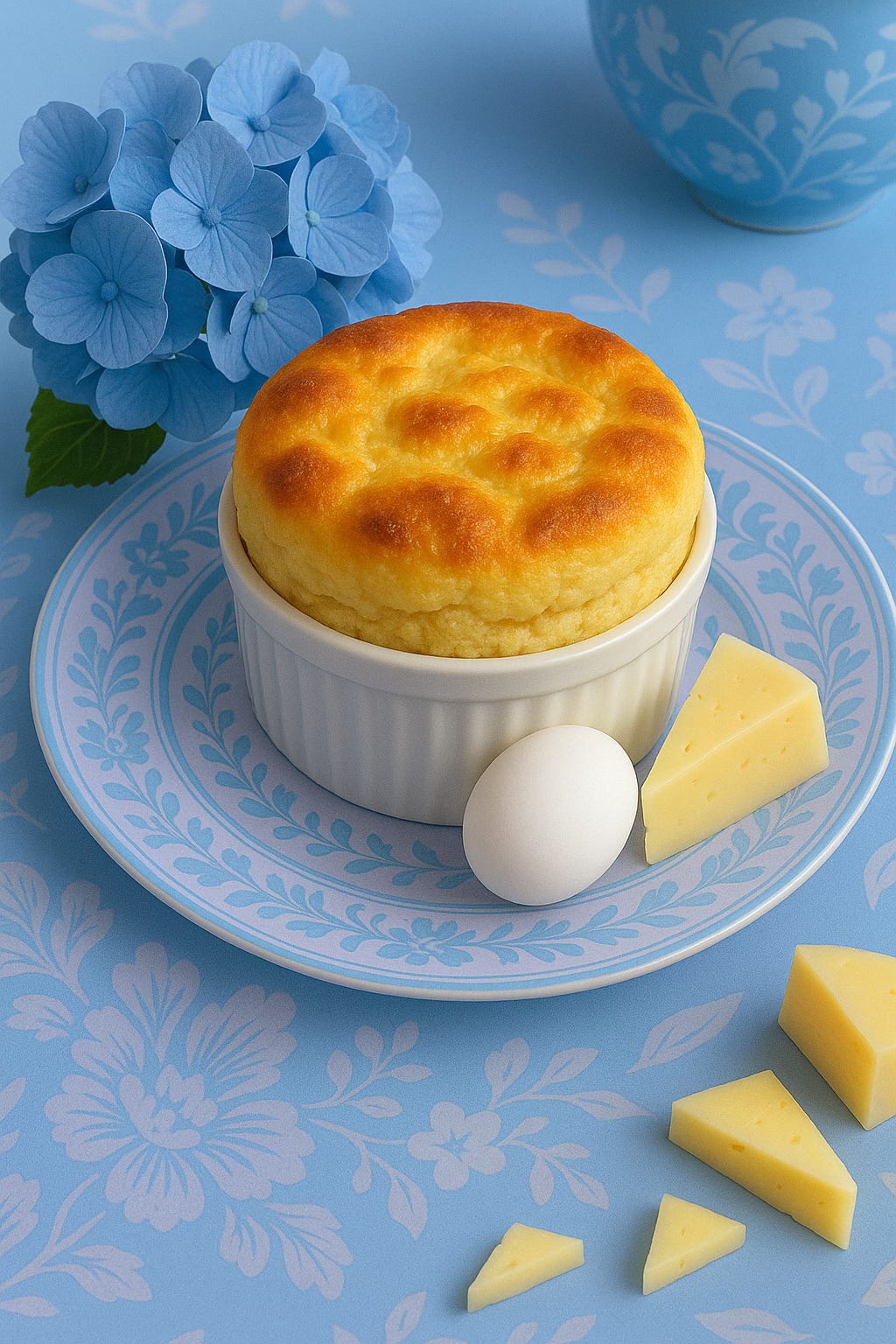Rising to the Occasion: The Delightful World of Cheese Soufflés
Cheese soufflés are often seen as the culinary equivalent of a high-wire act—one wrong move, and the whole thing can collapse. Yet, when done right, they are light, airy, and bursting with flavor, making them a timeless classic in the world of French cuisine. Let's take a deeper dive into the fascinating world of cheese soufflés, including their cultural significance, surprising facts, and even a healthy recipe.
A Brief History of Cheese Soufflés
The term “soufflé” comes from the French word “souffler,” meaning “to blow” or “to puff,” which perfectly describes the airy, puffed-up nature of this iconic dish. The soufflé originated in 18th-century France, credited to the innovative chef Marie-Antoine Carême, who was known for his elaborate and impressive dishes. Traditionally served as both a savory and sweet dish, cheese soufflés became a staple in fine dining, symbolizing sophistication and culinary prowess.
5 Surprising Benefits of Cheese Soufflés
High in Protein: Made primarily from eggs and cheese, soufflés pack a protein punch, which helps with muscle repair and satiety.
Rich in Calcium: Thanks to the cheese, a single serving can provide a significant portion of your daily calcium needs.
Versatile Flavor: Cheese soufflés can be customized with herbs, vegetables, and different types of cheese, making them adaptable for various diets.
Low in Carbs: Unlike many savory dishes, cheese soufflés are relatively low in carbohydrates, making them suitable for low-carb diets when made without flour.
Boosts Creativity: The art of making a soufflé encourages creativity in the kitchen and enhances cooking skills.
Cultural and Historical Significance
Cheese soufflés represent the ingenuity and finesse of French cooking. While they gained popularity in the 19th century, they remain relevant today, celebrated for their delicate texture and complex flavor profile. Traditionally, they were served at royal banquets and have since found a place on the menus of both upscale restaurants and cozy bistros. The soufflé’s reputation for being difficult to master only adds to its allure, making it a badge of honor for chefs around the world.
A Surprising Conspiracy Theory: Do Soufflés Really Fall?
There’s a common belief that even the slightest noise or vibration will make a soufflé collapse, but this is more of a culinary myth than a scientific fact. While a drastic change in temperature or an improperly prepared base can cause deflation, normal noise in the kitchen won’t doom your soufflé. So, feel free to cheer it on without worrying about the volume!
A Healthier Take: Spinach and Cheddar Cheese Soufflé Recipe
Ingredients:
4 large eggs, separated
1 cup fresh spinach, sautéed and chopped
½ cup grated sharp cheddar cheese
1 tbsp olive oil
¼ cup almond flour (optional for structure)
Salt and pepper to taste
Instructions:
Preheat your oven to 375°F (190°C) and grease the ramekins with olive oil.
Beat egg yolks with cheddar cheese, spinach, and almond flour.
In a separate bowl, whisk egg whites until stiff peaks form.
Gently fold the whites into the yolk mixture.
Pour into ramekins and bake for 20-25 minutes or until puffed and golden.
Serve immediately to enjoy the airy, cheesy delight!
Final Thoughts
Cheese soufflés might have a daunting reputation, but with practice and the right ingredients, they can be a delightful addition to your culinary repertoire. Whether you're celebrating National Cheese Soufflé Day or simply exploring new recipes, this dish is sure to impress and satisfy. Bon appétit!






